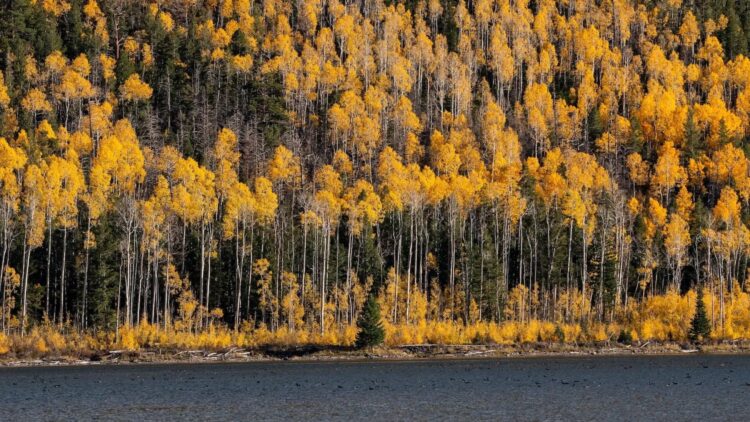Imagine stepping into a forest that is not merely a collection of trees but is actually a single, ancient organism. This place is Pando, a quaking aspen forest in Utah’s Sevier County, which has been flourishing for approximately 80 millennia, making it one of the oldest living things that inhabit the planet. Dubbed the “Trembling Giant,” Pando consists of over 47,000 genetically identical stems connected by a vast underground root system.
Pando: A single organism with ancient roots
Pando—which translates to “I spread” in Latin and is also known by its scientific name, “Populus tremuloides”—is located in Utah’s Fishlake National Forest. It is the largest known tree on Earth, as well as the heaviest living organism, estimated to weigh around 6,500 tons.
Spanning 106 acres, this ancient colony originated from a single seed during the previous Ice Age and has continuously regenerated itself through a complex underground network of roots.
Pando was first identified as a single organism by researchers in the 1970s, with recent DNA analysis further confirming its unique structure. According to the U.S. Forest Service, the organism is estimated to be between 16,000 and 80,000 years old, making it one of the Earth’s oldest living organisms.
What sets Pando apart from other trees?
What distinguishes Pando is its unique genetic composition. As a triploid organism, each of its cells contains three copies of each chromosome, which hinders its ability to reproduce sexually with other trees.
Instead, it produces genetically identical clones, resulting in the emergence of nearly 4,000 genetic variants over thousands of years.
Researchers also found that genetic similarities don’t always correlate with physical proximity within the forest, indicating a complex genetic intermingling that enhances Pando’s adaptability.
Pando’s struggle for survival is very real
Despite its impressive age and resilience, Pando faces major challenges. Its stems, which can survive for over 130 years, are not being adequately replaced by younger shoots, raising concerns about its long-term viability. Aerial images taken during a 2018 study revealed troubling signs of decline, including larger gaps in the canopy and aging stems.
The biggest threats to Pando’s survival include overgrazing by mule deer and cattle, which inhabit Fishlake National Forest and consume the young aspen shoots faster than they can regenerate. Historically, natural predators such as wolves and bears maintained a balanced ecosystem, but human activity has drastically diminished their populations. What’s more, pests—root rot, bacterial diseases, and fungal infections, among others—are further endangering the health of this age-old organism.
Modern threats also pose serious challenges to Pando’s survival. Habitat disruption, human encroachment, and climate change are all factors that could jeopardize the delicate environment on which this colony depends. Conservation efforts are currently underway to protect its ecosystem, including installing fences to limit grazing and monitoring growth patterns.
Nevertheless, Pando’s extraordinary longevity is a testament to its evolutionary success. As noted by William Racliff, an evolutionary biologist at the Georgia Institute of Technology in Atlanta, “This organism has persisted for tens of thousands of years. It’s seen ice ages come and go, mass extinction events, and it’s still here. It highlights a kind of resilience that is rare in nature.”
Indeed, Pando stands as a symbol of nature’s incredible endurance and the need for environmental stewardship. As such, taking swift action to ensure Pando’s survival is crucial. To safeguard this extraordinary organism, protecting it from the aforementioned threats and raising public awareness is incredibly vital. As scientists continue to observe and study this forest, their findings could bolster conservation efforts. Here’s hoping the Trembling Giant will continue to thrive for many more millennia to come!

